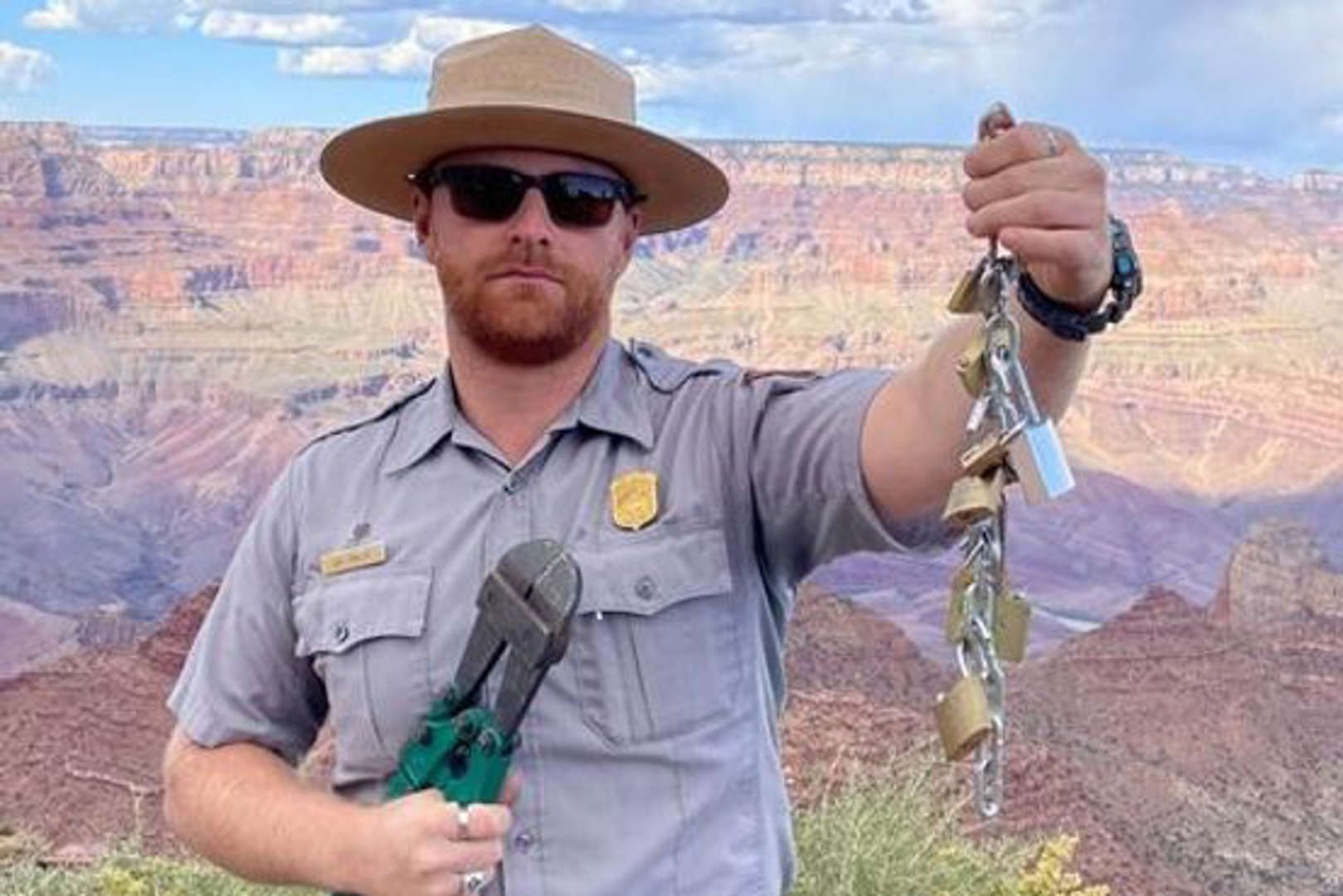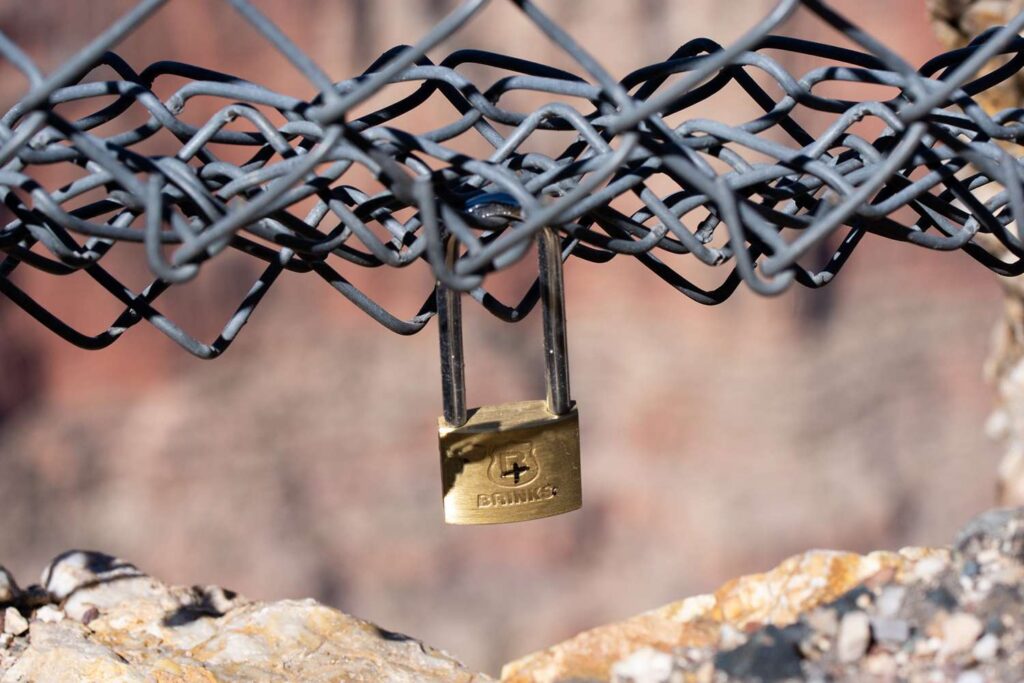
“Love locks,” which are padlocks couples attach to bridges and fences worldwide, have been a persistent issue for some time. However, at the Grand Canyon, they have taken on a more concerning dimension, potentially jeopardizing an endangered species.

Officials from the Grand Canyon National Park recently urged visitors to refrain from bringing padlocks, deeming them a form of litter and graffiti. According to the park, individuals have been affixing these padlocks to fences at popular viewpoints and tossing their keys into the Grand Canyon.
This activity, while perhaps meant as a romantic gesture, could inadvertently attract the attention of the California condor. These majestic birds have previously ingested litter, such as coins and aluminum foil, which, if consumed excessively, can lead to the condor’s demise, as per the park’s warning.
While there is apprehension about the shiny allure of padlocks for these birds, the park’s spokesperson, Joëlle Baird, clarified that there have been no documented cases of a condor ingesting one of these keys. Nonetheless, Baird emphasized, “It might seem benign, but actually there’s really damaging effects for wildlife but also our staff.”
To underscore the gravity of the situation, the national park shared an X-ray image depicting metal objects in a condor’s digestive system, necessitating a surgical intervention. Additionally, the park posted images of an official holding a chain of padlocks along with a bolt cutter, emphasizing that “Love is strong, but it is not as strong as our bolt cutters.”
The trend of “love locks” has gained worldwide recognition in recent years. Couples typically inscribe their names on a padlock, secure it to a bridge or fence, and then symbolically discard the key. This practice has become a part of the tourist experience in Paris, a city renowned for its romantic connotations, and it has spread to other popular destinations.
However, the accumulation of these locks has posed challenges for some cities. In 2015, officials in Paris removed thousands of padlocks from the Pont des Arts pedestrian bridge over the Seine, citing concerns about the bridge’s stability and maritime traffic.
New York City has also addressed its own padlock issue, introducing fines in 2016 for couples attaching padlocks to the Brooklyn Bridge.
In the case of the Grand Canyon, where these padlocks have been attached to fences for the past decade, the problem is distinct. The Grand Canyon plays a pivotal role in the recovery of the California condor, a massive bird with a wingspan exceeding 9 feet.
Their population had sharply declined due to habitat loss, lead poisoning, and poaching, with only 22 remaining by the 1980s. A conservation effort led to their captivity to prevent extinction, followed by the U.S. Fish and Wildlife Service reintroducing them into the wild in the 1990s.
Their first successful wild nesting after reintroduction took place in the Grand Canyon in 2001, marking a significant milestone for their recovery. Today, there are approximately 500 California condors thriving in the wild.






